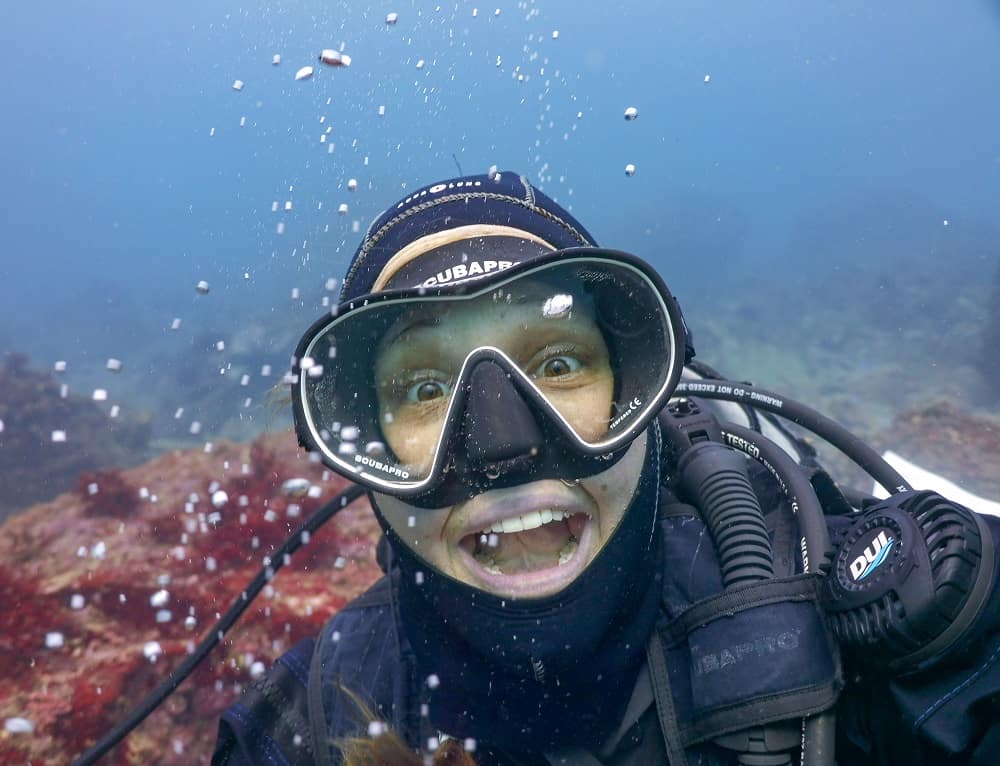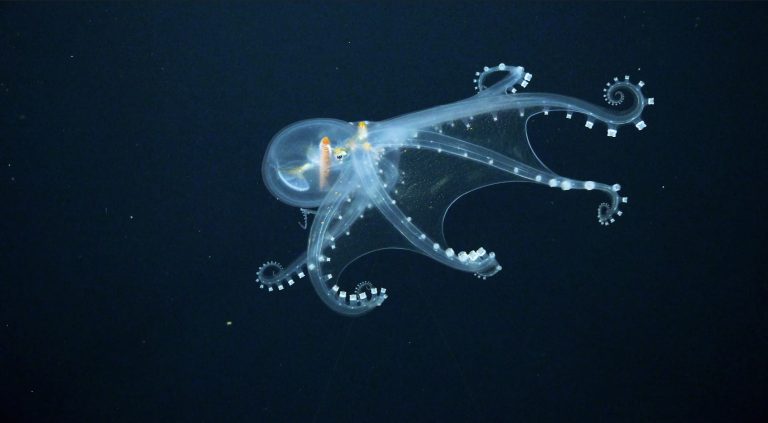Octopus Eyes: Everything You Need To Know About Cephalopod Vision!
It is utterly impossible to generalize about octopus eyes and their vision. There are the adjustable pinhole eyes of the nautilus, the extreme size difference between the eyes of the cock-eyed squid, and the largest eyes on the earth belong to the giant squid! On top of that, cephalopod pupils come in all different shapes (U-shaped, W-shaped, round, rectangular); the vast majority are colorblind- and they have panoramic vision! In today’s blog post, we will be focusing on and discussing the extraordinary eyesight of octopuses.
Fun Facts About An Octopus’s Eye Vision
With so many of you asking us questions about octopus eyes and their vision on our Facebook and Instagram posts, we wanted to share some more fun facts about cephalopods and their eyesight!
They use their pupil dilation in many ways!
Octopuses are expertly adapted to their environment on so many levels with pupil dilation and constriction being just another incredible trick up their sleeve (or should I say arm?)!
Since they like spending time in their dark dens but also need to come out into bright shallow waters, their pupils are ready for this drastic change of light. An octopus can close its pupil in less than a second to help with this transition. Compared to a nautilus who lives in constant low to no light conditions, it takes them up to 90 seconds for their pupils to constrict!
Another example is Japetella diaphana, a deep-sea octopus species that takes 6 seconds to change its pupil size.
🐙 Octopus Fun Fact
Pupil dilation also helps octopuses camouflage! They do this by constricting their pupils, making their skin more uniform helping them blend into their surrounding environment. The reverse is also handy.
Dilating their pupils can aid their deimatic (threat or startle) displays by making predators think twice about attacking because those massive eyes could be attached to a big body!
Octopus eyes can act independently of one another
With octopuses, each pupil is controlled by 7 extraocular muscles, each controlled by its own nerve. This allows them to rotate their eyes by up to 80 degrees in either direction.
Talk about the ultimate side-eye!

When you say they have big eyes… how big are we talkin’?
Relative to their body size, octopuses generally have large eyes. Take the Common Octopus (Octopus vulgaris) as an example! Their eye diameter ranges between 15-20 mm (~0.5 – 1 inch) and their average weight is around 300-400 grams (~ 0.6 lbs).
By comparison, an adult human eye, on average, is 24 mm in diameter and we weigh A LOT more than an octopus.
Do octopuses have massive eyes compared to their body or do humans have tiny eyes compared to body size? That is the question!

They are colorblind…but can see color!
Octopus eyes contain one type of light receptor, which only allows them to see black and white. Studies have shown they are able to see blues and yellows, but that’s where their color vision seemingly ends.
So, how do they manage to blend in so expertly with their backgrounds when they can’t see what color it is? They can potentially see colors by changing the depth of their eyeball!
A father and son research team, Alexander and Christopher Stubbs, published a theoretical paper concluding that some shallow-water cephalopods with weirdly shaped pupils might be able to detect colors.
🐙 Octopus Fun Fact
Octopuses have dumbbell-shaped pupils that act as prisms, scattering white light and splitting it into its color components. This effect is called chromatic aberration! When octopuses change the depth of their eyeball, they can focus different wavelengths of light on the retina individually.

Did you know an octopus can see polarized light?
Polarized vision is yet another way octopuses can add color to their black and white world!
Being able to see polarized light can help:
- Octopus communication
- Seeing through another animal’s camouflage
- Contrast enhancement
Amongst cephalopods, there seems to be a range of sensitivity to polarized light. Cuttlefish come out on top being able to see and respond the fastest to polarized light.
The closest we basic humans get to detecting polarized light is when we put on polarized glasses to cut down on glare.
Their eyes stay horizontal no matter what!
Octopuses possess an autonomic (involuntary) response that maintains the orientation of their pupils. Basically, they are always horizontal- no matter what!
It’s a reaction mediated by their statocysts– a pair of organs situated in cartilage below the octopus’s brain. These organs function like our inner ear.

Octopuses have no blind spot
Imagine having TWO panoramic cameras on the sides of your head. Good luck trying to sneak up on an octopus when they can scan their environment in every direction!
Having rectangular pupils and eyes positioned laterally on their head helps octopuses see in all directions in addition to giving them control over how much light they let into their eyes.
Super helpful when you’re out hunting at night looking for prey but need to watch out for predators at the same time!
Are they near-sighted or far-sighted?
A relaxed octopus eyeball is short-sighted and well adapted to seeing objects nearby. They can’t see much past 2.5 meters (~8 feet). However, octopuses have a fun trick where they contract a circular muscle around their eyes, which moves their lens closer to the retina resulting in 20-20 octo vision!

🐙 Octopus Fun Fact
Octopus eyes focus like a camera with the lens moving in or out while our eyes use muscles to squeeze the lens to focus. Imagine instead of wearing glasses, all you had to do was flex an eyeball muscle (squint?) and your eyes would adjust themselves.
Voila, perfect vision!
Octopus can see you AND remember you
Octopus possess short and long-term memory, which means they can observe and remember people and various animals.
A research study on the Giant Pacific Octopuses (GPO) at the Seattle Aquarium showed that their behavior, breathing, and colors changed depending on whose face they recognized. Eight different GPOs were treated either by a ‘nice’ keeper who gave them food or by a designated ‘mean’ keeper who poked them with a bristly stick. After just two weeks of this, the octopuses would approach the nice keeper but hid away when the mean keeper came around.
There are many stories from aquariums and labs where octopuses will decide who they like and who they will spray in the face with water if they come close enough!
They can see with their own skin!
Opsin molecules are light-sensitive proteins that are found in octopus eyes, helping them detect light. These molecules are also found in their chromatophores, which are distributed throughout their skin. This means, hypothetically, that an octopus can “see” or detect light with its skin!

🐙 Octopus Fun Fact
A study from the University of California showed this phenomenon by collecting patches of skin from the California Two-Spotted Octopus (Octopus bimaculoides) and shined different lights on them. The chromatophores on the skin patches reacted most strongly to bright white light, expanding and pulsating rhythmically.
Red light, which is the first light to be filtered out in the water, got the least reaction from the skin.
Octopus Eyes: They See it ALL!
At first glance, octopuses seem to have pretty terrible vision, plagued by nearsightedness and colorblindness. But alas, in true octopus fashion, they overcome both of these handicaps! They use their eyeball muscles to focus clearly on subjects with their unique pupils for a 360० view. Not to mention, topped off with polarized vision.
Just another day in the life of an octopus who probably doesn’t even know how astounding they really are!

If you want to educate yourself some more about all sorts of different cephalopods, take a look at our encyclopedia. Or, what we call it, our Octopedia!
Connect with other octopus lovers via the OctoNation Facebook group, OctopusFanClub.com! Make sure to follow us on Facebook and Instagram to keep up to date with the conservation, education, and ongoing research of cephalopods.
More Posts To Read:
- Book Giveaway: “Secrets of the Octopus” & Bonus interview!
- ‘Artist Spotlight’ Of The Week: Victor Grasso
- Meet the Cockeyed Squid: the Deep-Sea Animal with a Giant Eye!
- ‘Cephalotography’ Of The Week: Jialing Cai
- 10 Facts About Baby Nautilus!

Corinne is a biologist with 10 years of experience in the fields of marine and wildlife biology. She has a Master’s degree in marine science from the University of Auckland and throughout her career has worked on multiple international marine conservation projects as an environmental consultant. She is an avid scuba diver, underwater photographer, and loves to share random facts about sea creatures with anyone who will listen. Based in Japan, Corinne currently works in medical research and scientific freelance writing!






